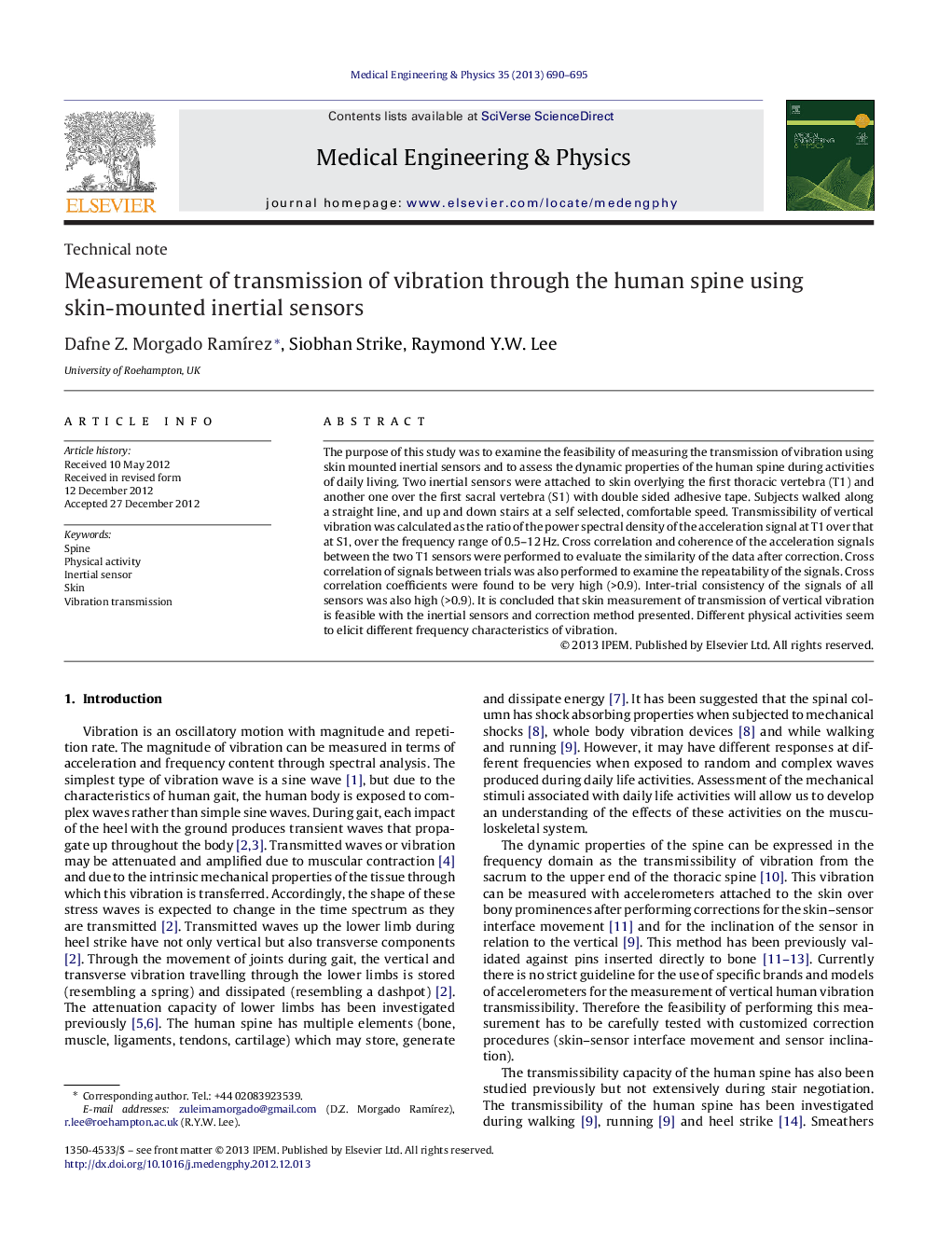| Article ID | Journal | Published Year | Pages | File Type |
|---|---|---|---|---|
| 876082 | Medical Engineering & Physics | 2013 | 6 Pages |
The purpose of this study was to examine the feasibility of measuring the transmission of vibration using skin mounted inertial sensors and to assess the dynamic properties of the human spine during activities of daily living. Two inertial sensors were attached to skin overlying the first thoracic vertebra (T1) and another one over the first sacral vertebra (S1) with double sided adhesive tape. Subjects walked along a straight line, and up and down stairs at a self selected, comfortable speed. Transmissibility of vertical vibration was calculated as the ratio of the power spectral density of the acceleration signal at T1 over that at S1, over the frequency range of 0.5–12 Hz. Cross correlation and coherence of the acceleration signals between the two T1 sensors were performed to evaluate the similarity of the data after correction. Cross correlation of signals between trials was also performed to examine the repeatability of the signals. Cross correlation coefficients were found to be very high (>0.9). Inter-trial consistency of the signals of all sensors was also high (>0.9). It is concluded that skin measurement of transmission of vertical vibration is feasible with the inertial sensors and correction method presented. Different physical activities seem to elicit different frequency characteristics of vibration.
